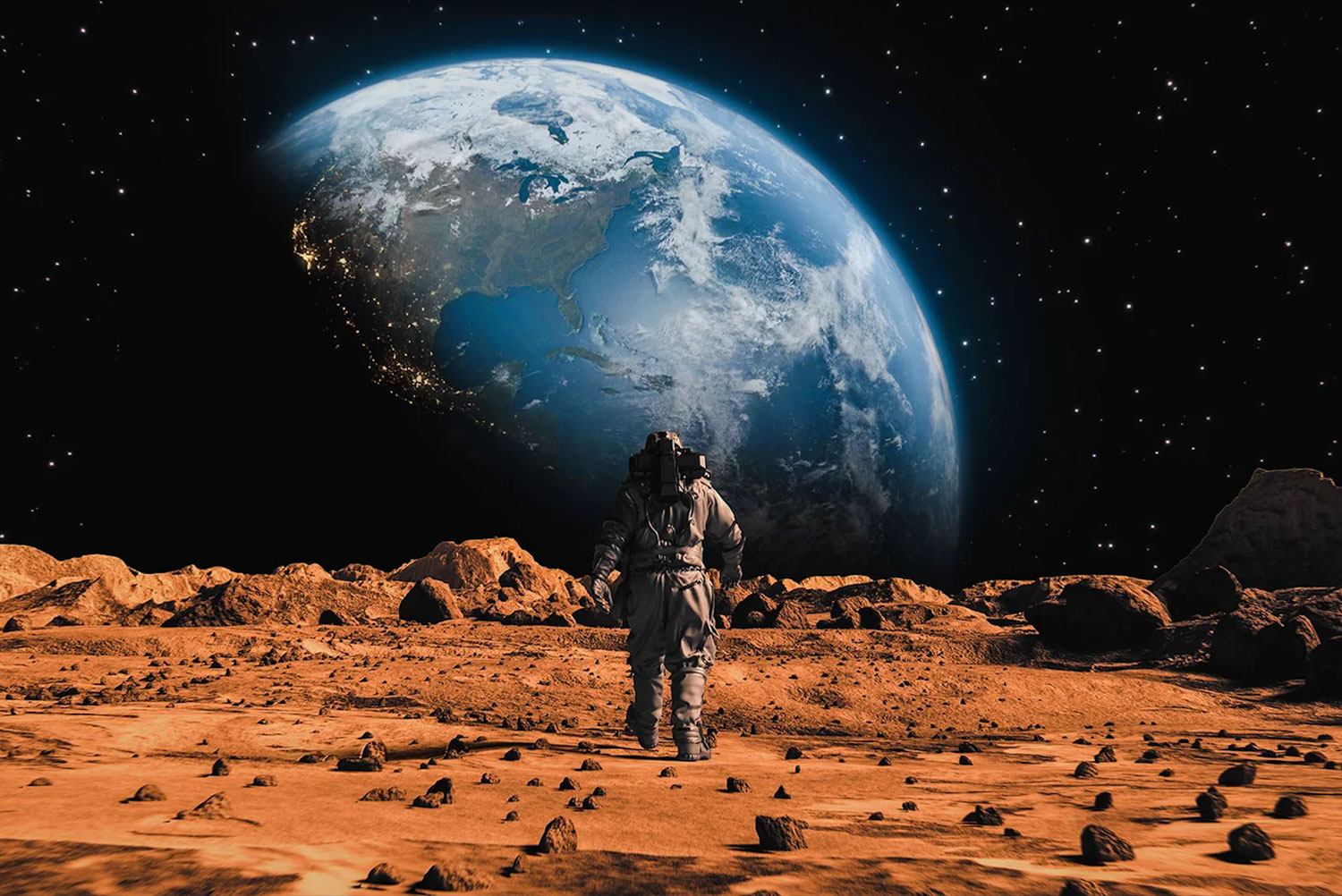CHAPTER II — Population Centers, Temperatures and Climate
byCHAPTER II — Population Centers, Temperatures and Climate describes Mars as a world of remarkable contrasts, with a population of 13.16 billion people spread across a vast expanse of habitable land. This is in sharp contrast to Earth, where just 1.645 billion people occupy less land, in part due to the large oceans that dominate Earth’s surface. Mars, on the other hand, uses almost its entire landmass for habitation and agriculture, with the few exceptions being swampy areas and the polar ice caps. The extensive canal system, visible even through telescopes from Earth, plays a crucial role in Mars’ ability to support its vast population, enabling the planet to implement an advanced and highly intensive form of agriculture that exceeds the farming techniques used on Earth.
Mars’ climate is markedly different from Earth’s, yet it is suitable for sustaining life, despite extreme temperatures that can plunge to as low as 80 degrees below zero during winter. The planet’s year lasts 687 days, which means the longer seasons provide extended periods of temperate weather—particularly during spring, summer, and autumn. These milder conditions allow Martians to grow multiple crops each year, ensuring that food scarcity is never an issue. Rather than relying on extensive irrigation systems like those on Earth, Martian agriculture adapts to the planet’s unique atmosphere. The Martians employ dewfall, a natural process that collects moisture from the atmosphere, to irrigate their crops, a method suited to the rapid evaporation rates and thinner atmosphere that characterize their planet.
Mars’ atmosphere, while breathable, presents significant challenges for its inhabitants, primarily due to its low air pressure, which measures just 8 pounds per square inch compared to Earth’s 15. As a result, Martians have evolved unique physiological traits that allow them to thrive in this environment, including the ability to function without requiring specially adapted lungs. This adaptation is essential for survival, underscoring the role of divine guidance and efficiency in Martian life, where every resource is carefully utilized for optimal output. Despite these challenges, the Martian population has flourished, with little to no need for specialized environmental protection, as their bodies are well-suited to the conditions.
In addition to the low atmospheric pressure, Mars benefits from a remarkably stable climate. The planet does not experience the extreme windstorms, lightning, or magnetic disturbances that often characterize Earth’s environment. Instead, Mars enjoys clear skies, rare rainfall, and gentle breezes that foster a peaceful existence for its people. This serene climate contributes to a harmonious society, where farming is productive, and the environment supports both the land and its inhabitants. Unlike Earth, which is often plagued by environmental and societal turbulence, Mars is portrayed as a world of tranquility—where innovations in farming and collective societal efforts contribute to a stable, prosperous existence for its people.
What further distinguishes Mars from Earth is the absence of violent weather patterns and the minimal disruption to its inhabitants’ daily lives. The calmness of the Martian climate is vital for sustaining the planet’s high population density, ensuring that its agricultural systems can operate without the interference of severe storms or natural disasters. While Earth continues to struggle with issues like droughts, floods, and unpredictable weather, Mars offers a predictable and consistent environment that enables its people to focus on productivity and growth. The Martian approach to sustainability is built around the reliable use of the planet’s resources, from water management via canals to the adaptation of farming methods for an atmosphere that differs vastly from Earth’s.
In sum, the climate and atmosphere of Mars contribute to a unique, thriving environment where the Martian population not only survives but flourishes. By harmonizing with the natural elements and developing an efficient use of resources, Mars has overcome the challenges posed by its extreme temperatures and low air pressure. This chapter showcases how the people of Mars, through careful planning and collective effort, have created a stable and abundant world—a stark contrast to Earth’s often unpredictable climate and the environmental struggles that shape its own societies.


